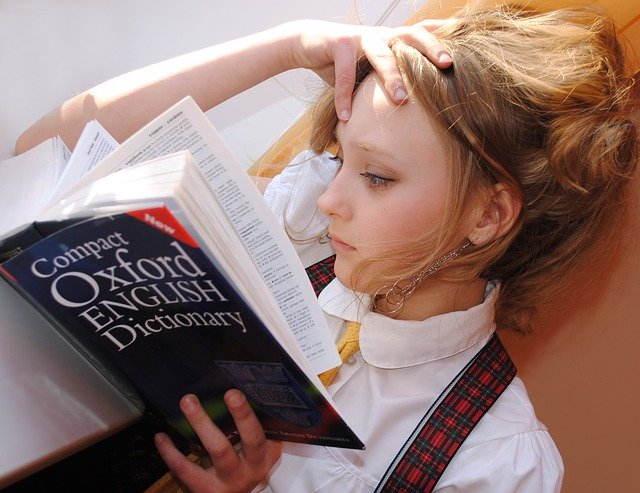Table of Contents
Sight words have two definitions. One is common terms which are constantly seen when reading a language. For English, these include “a, you, the, was, little” and many more.
Another definition is commonly used words that cannot be sounded out by simply looking at them. Understanding sight words in both contexts is critical to the understanding of a language as a whole.
Two well-known lists of such words are the Dolch list and the Fry list. The Dolch list is composed of 220 words, while the Fry list has 600 and sometimes more. Often times, people only consider the first 200 on the Fry list so that it is comparable to the Dolch list’s amount. The Dolch list fits the “hard to sound out” definition better, while the Fry list fits the “very common words” definition. Overall, each list contains words that young readers must know in order to begin reading. In this article, some practical ways of teaching these words will be discussed.
How many words to introduce
It is important not to overwhelm young students, but it is also important to remember that they need to know all of these words to truly master English.
Introduce 1 to 4 words, depending on your child progress. Hands-on sight words worksheets are a great way to introduce new vocabulary. Over an extended amount of time, teaching all of the words on the Dolch 220 and the first Fry 200 will have massive benefits for students.
Lists are available in many places that show the Dolch 220 and Fry 200 together with overlapping words removed for convenience. Simply print a list out and try some of the strategies listed below to teach the words to young pupils.
One additional fact to consider before teaching sight words is that many students already know the spoken versions of sight words; they just need you to connect the oral word to its written form.
Teaching sight words with flashcards
Repetition is a very effective way of getting children to store sights words in their mind. Flashcards provide a very effective way to have students repeat the words.
The simplest method of utilizing flashcards is to write the sight words on flashcards, hold them up, and have the student pronounce the word back after seeing it. If the student does not know how to pronounce the word, say it for them and have them say it back to you multiple times. After going through cards like this several times, students should be quite familiar with sight words.
Teaching sight words with games
Flashcards may work for some students, but others may prefer more interactive methods of learning. For the more tactile student, games may come in very handy. Many games could be played in order to teach sight words. Word searches using sight words can be found all across the internet and can be made very easily by the teacher.

Playing a game of Go Fish that uses sight words instead of cards is another fun way to teach students. Additionally, Jeopardy! style games where teams of students earn points for pronouncing a sight word correctly can be easily made in presentation programs or with paper and magnets on a board. Playing around with sight words like this makes children feel more comfortable using them. Playdough is a favorite activity among the young learners, combine it with learning and you will get the perfect lesson. Playdough pre primer sight words activity mats are great for preschoolers and kindergarten kids.
Teaching sight words through music
A memorable tune is much more likely to stick in one’s mind than a list of words being read aloud in a boring fashion. Construct a song that includes multiple sight words and go through it with students. Make sure they understand how to pronounce the words and the significance of the words.
Creating a music video or getting students involved to act out the piece while singing it can further drive home the meaning of the words to the children. When students hear sights words being used in a song, it will make the list feel like more of an everyday thing than just an obscure set of words.
Teaching sight words through writing
Hearing a student say a word is one thing, but to see them use the word in their own writing is a completely new level of understanding. Give students a list of 10-15 sight words to utilize in creating a story. You may set a topic to write about or leave it open to the students; the best option is whichever they will feel more comfortable doing.
Allow students to share their writing with the class or one-on-one with the teacher to truly check that they have mastered the use of sight words. After a student writes out sight words and uses them in their own style, they will start using them regularly.

Teaching sight words through reading
Reading a sight word can allow a student to uncover the meaning on his or her own; this type of learning can last a lifetime. Bookstores everywhere carry dozens of books with sight words for students. Reading these children’s books in any fashion can be beneficial to a student’s learning.
One method of reading is allowing every student to read on their own and then discussing the book afterward to make sure each one understood the story correctly.
Another strategy is to have the student read a book one-on-one with the teacher. One-on-one may be high pressure for some students, but it is also a great place for mistakes to be noticed and corrected. Reading a book is one of the best techniques of getting students to memorize sight words in a way that appeals to them.
Useful Resources
- Bring your language learning to life
- Worksheets for sight words
- Songs for sight words
- Sight words Kindergarten games
- Sight words list 1st Grade
- Sight words online games
- Apps for sight words
- Sight words video
- Sight words with sentences
- Sight words YouTube
- Sight words video for Kindergarten
- Sight words examples
- Sight words online games free
- Sight words 1st Grade games
- Sight words Kindergarten free
- Sight words app free
- Sight words interactive games
- Sight words activity sheet
- Sight words games pdf
- Sight words help
- What sight words should a preschooler know
- What sight words to teach first


